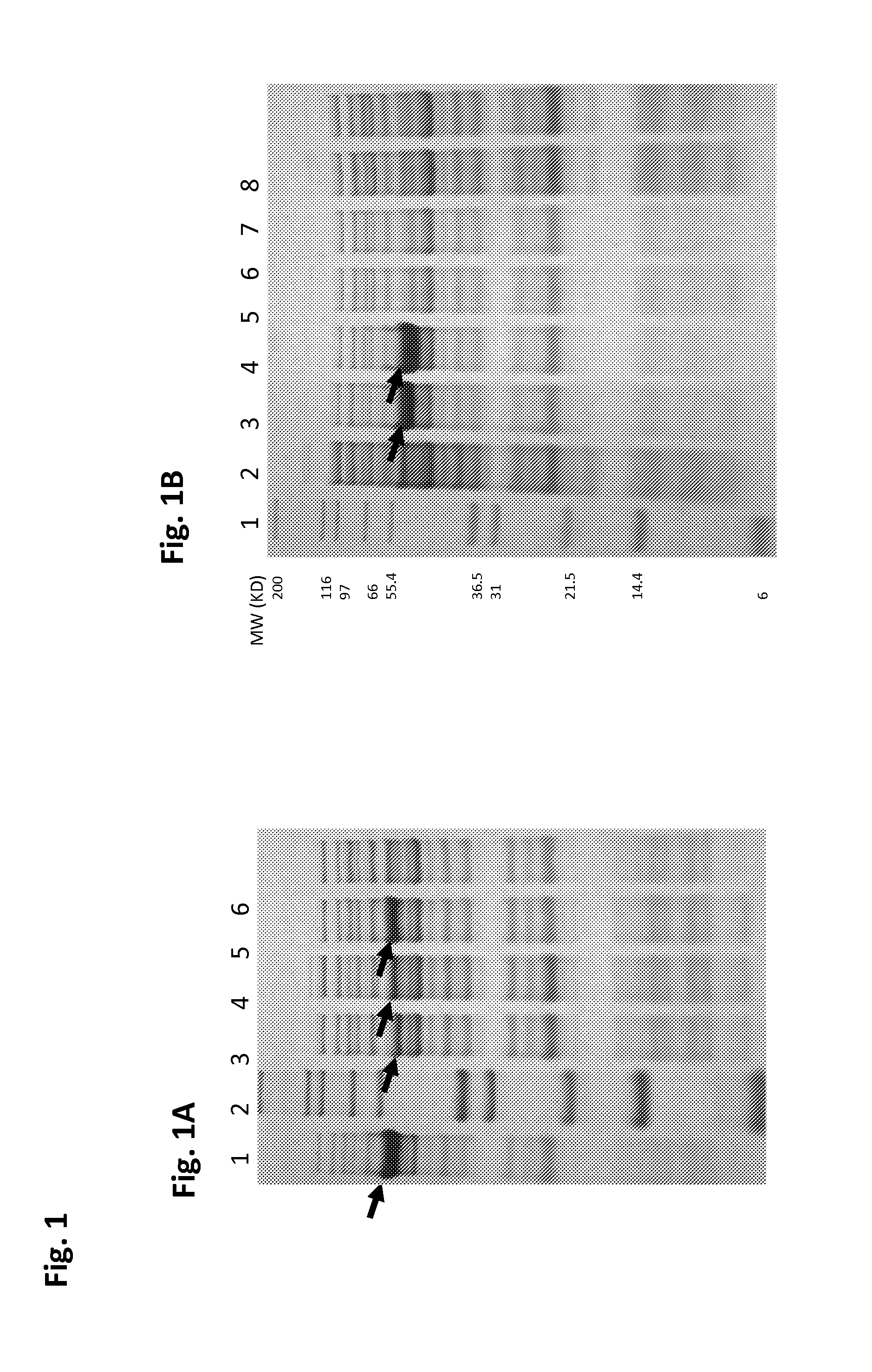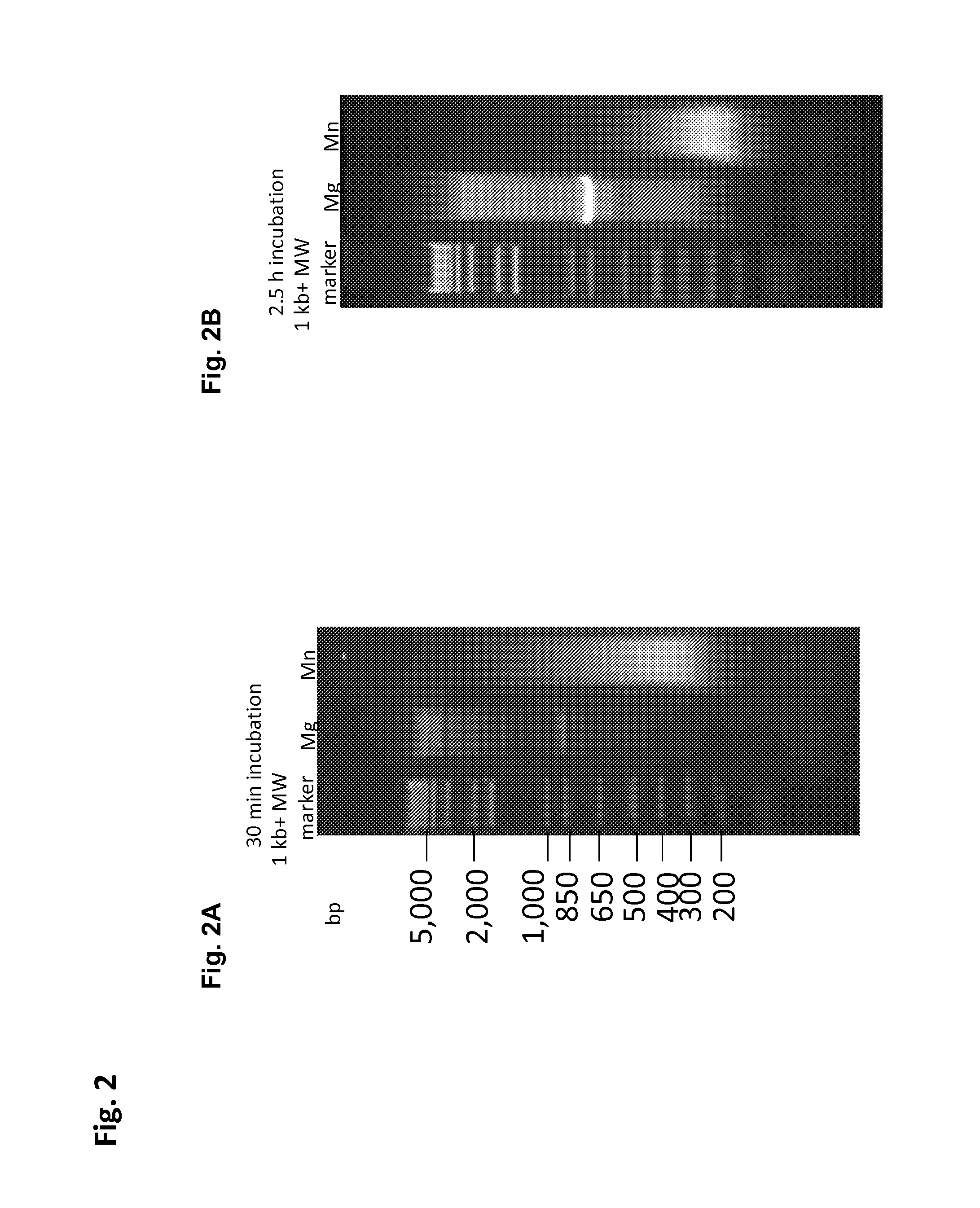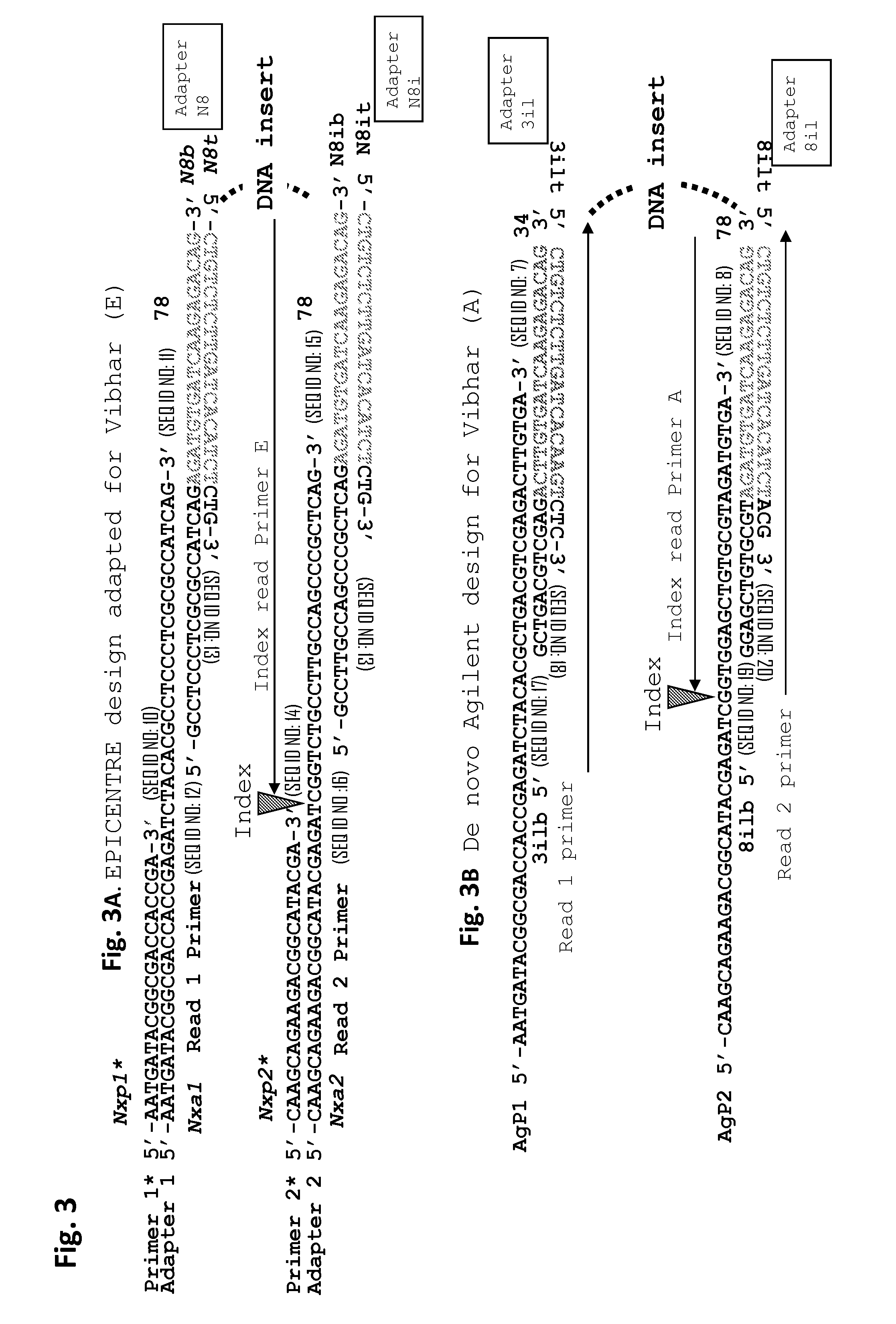Methods and compositions for DNA fragmentation and tagging by transposases
a technology of dna fragmentation and composition, applied in the field of molecular biology, can solve the problems of insufficient or too extensive dna fragmentation, inability to produce native transposases, and insufficient cofactors, and achieve the effects of short reaction time, low concentration, and short reaction conditions of broadens transposases
- Summary
- Abstract
- Description
- Claims
- Application Information
AI Technical Summary
Benefits of technology
Problems solved by technology
Method used
Image
Examples
Embodiment Construction
[0044]Reference will now be made in detail to various exemplary embodiments of the invention, data supporting such embodiments being illustrated in the accompanying drawings. This detailed description is not to be considered a limitation of the invention, but should rather be understood as a disclosure that provides the reader a more detailed description of certain aspects, features, and embodiments of the invention.
[0045]Before embodiments of the present invention are described in detail, it is to be understood that the terminology used herein is for the purpose of describing particular embodiments only, and is not intended to be limiting. Further, where a range of values is provided, it is understood that each intervening value, to the tenth of the unit of the lower limit, unless the context clearly dictates otherwise, between the upper and lower limits of that range is also specifically disclosed. Each smaller range between any stated value or intervening value in a stated range ...
PUM
| Property | Measurement | Unit |
|---|---|---|
| concentration | aaaaa | aaaaa |
| concentration | aaaaa | aaaaa |
| temperature | aaaaa | aaaaa |
Abstract
Description
Claims
Application Information
 Login to View More
Login to View More - R&D
- Intellectual Property
- Life Sciences
- Materials
- Tech Scout
- Unparalleled Data Quality
- Higher Quality Content
- 60% Fewer Hallucinations
Browse by: Latest US Patents, China's latest patents, Technical Efficacy Thesaurus, Application Domain, Technology Topic, Popular Technical Reports.
© 2025 PatSnap. All rights reserved.Legal|Privacy policy|Modern Slavery Act Transparency Statement|Sitemap|About US| Contact US: help@patsnap.com



